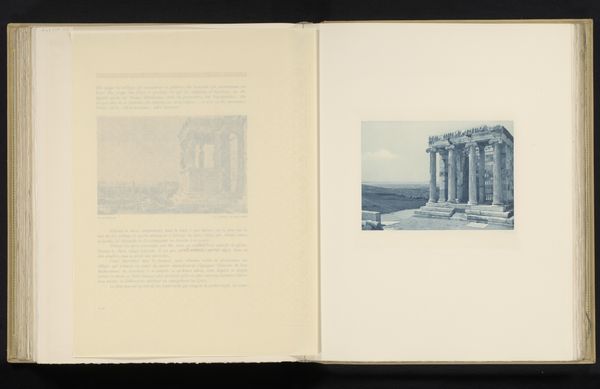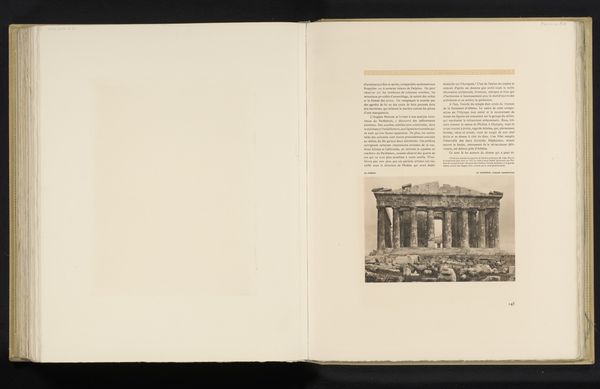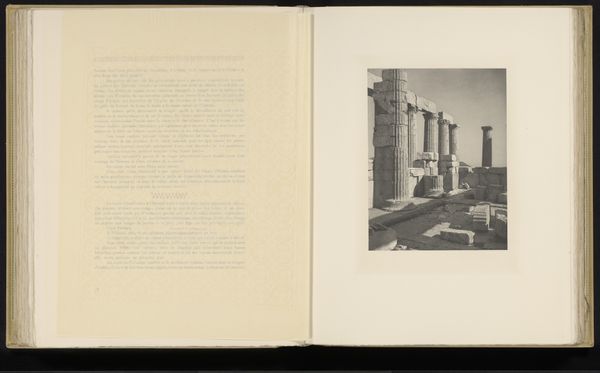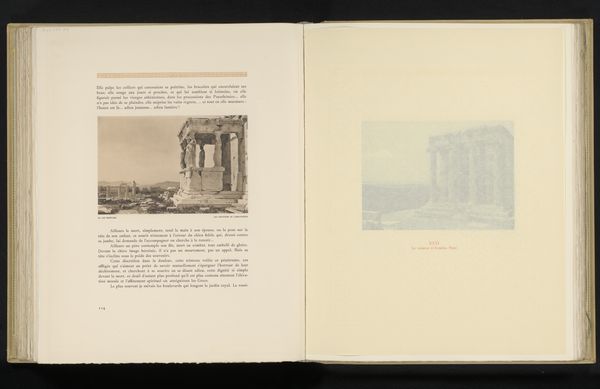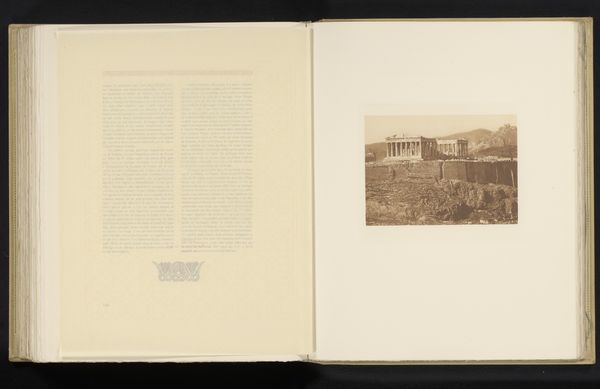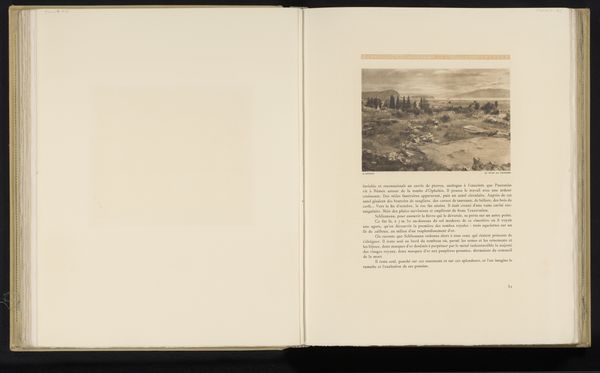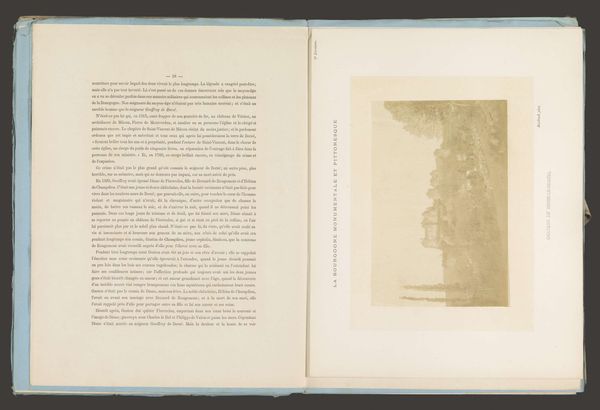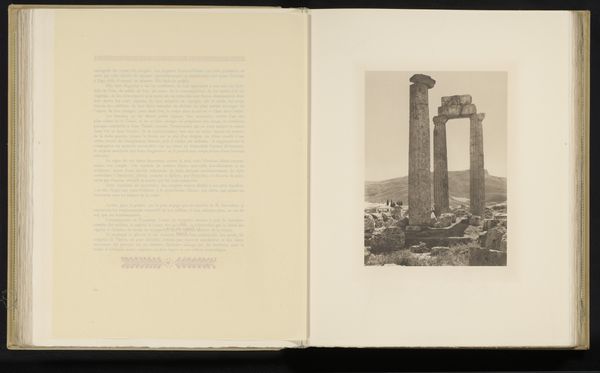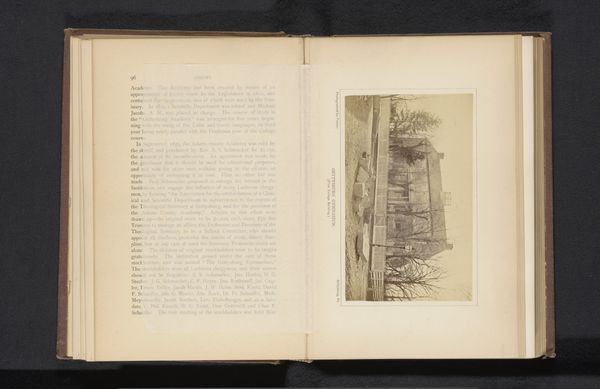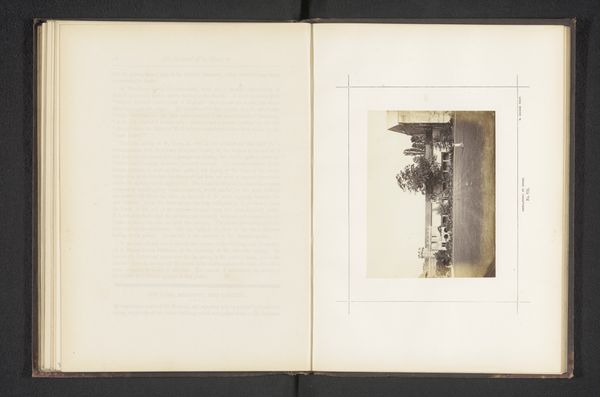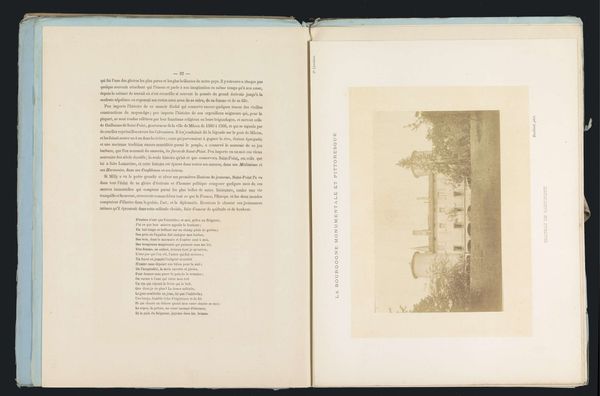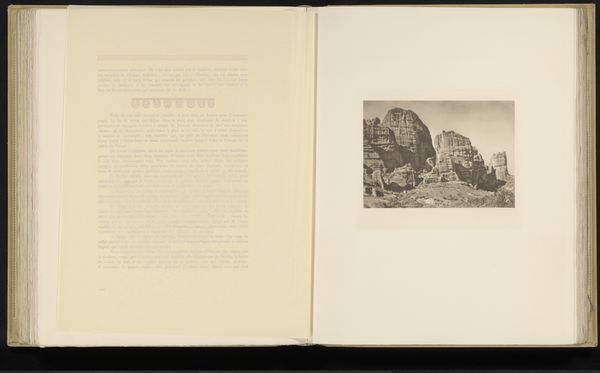
print, photography
# print
#
greek-and-roman-art
#
landscape
#
photography
#
ancient-mediterranean
Dimensions: height 160 mm, width 225 mm
Copyright: Rijks Museum: Open Domain
Editor: This print, "Parthenon," a photograph by Frédéric Boissonnas from before 1910, presents the classical ruin in a sort of ghostly monochrome. There’s a captivating contrast between the solid architecture and its fluid reflection, creating an almost dreamlike quality. What aspects of the image stand out to you most? Curator: The geometry predominates; notice how Boissonnas captures the insistent horizontality against the broken, vertical thrust of the columns. See, too, the way the foreground water fractures and reassembles the building's image. Do these mirrored inversions undermine or underscore our perception of enduring architectural form? Editor: I see what you mean. The broken reflections definitely contrast with the order suggested by the architecture. Curator: Yes, and let us observe the artist's skillful manipulation of light and shadow. The Parthenon is uniformly illuminated, with a remarkable amount of detail rendered, whereas the foreground reflects that light, though not clearly. Observe also how the printmaking technique allows Boissonnas to soften edges, producing this sublime atmospheric perspective. Is the artist evoking ruin or ideal? Editor: Hmm. Now that I'm looking closer at the columns and their reflections, it looks less like ruin and more like how light refracts... making it harder to say if Boissonnas idealized the space or emphasized its temporal nature. Curator: Precisely! This print prompts fundamental questions of structure and illusion. Boissonnas achieves that delicate tension by emphasizing these inherent pictorial components of photography itself. Editor: I had never considered how the photograph *itself* is making the ruin, or ideal, visible. That makes me think about photographs in a completely new way! Curator: Agreed; by carefully studying form, line, and light, we unveil not only the subject, but the act of its artistic representation.
Comments
No comments
Be the first to comment and join the conversation on the ultimate creative platform.
